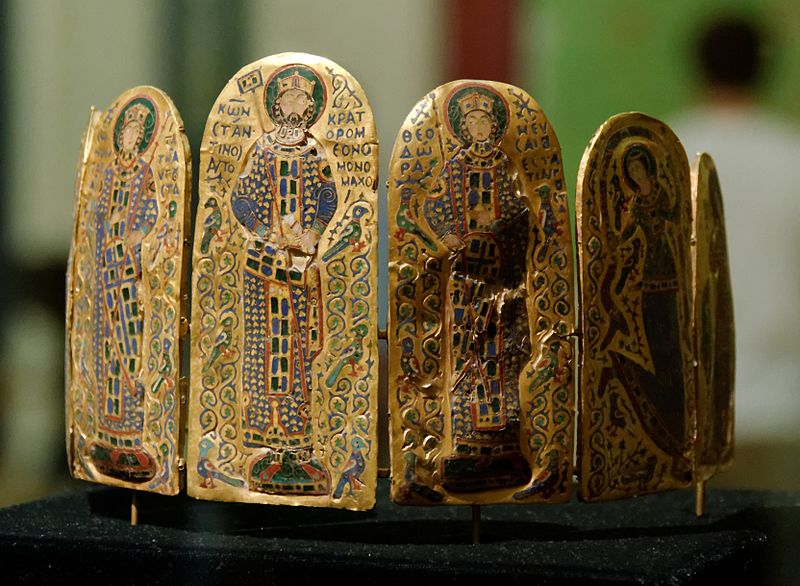The Crown of Emperor Constantine IX Monomachos, created around 1042, stands as one of the most remarkable and intricate pieces of Byzantine royal regalia. Crafted from gold and decorated with delicate cloisonné enamel, this crown is not only a symbol of imperial power but also a testament to the advanced artistry and craftsmanship of the Byzantine era.
An Artistic Masterpiece of the Byzantine Era
The crown of Constantine IX Monomachos stands out for its exquisite craftsmanship. Gold is the primary material used to shape the crown, while cloisonné enamel adds intricate designs to its surface. Depictions of saints and allegorical figures, drawn from Christian iconography, are vividly presented, reflecting not only religious devotion but also the close connection between royal authority and divine will in Byzantine thought. These images enhance the beauty of the crown while symbolizing divine protection over the emperor and the empire.
A Symbol of Imperial Power in Byzantine Rule
Believed to have been worn by Emperor Constantine IX Monomachos throughout his reign (1042–1055), this crown serves as a vivid symbol of the emperor’s supreme authority. In Byzantine society, every piece of royal regalia held deep significance, representing not only luxury but also the divine right to rule. Constantine IX’s crown stood as a powerful assertion of both imperial power and religious legitimacy, crucial elements for a ruler in a world filled with external threats and internal strife.
During Constantine IX’s reign, the Byzantine Empire faced numerous challenges, including threats from the Normans, Seljuks, and other external forces, as well as internal political instability. Yet, the crown became an emblem of the enduring strength and grandeur of the empire, symbolizing Constantinople’s role as the political and cultural heart of the medieval world.

A Precious Work of Art
Today, the Crown of Constantine IX Monomachos is housed in the Hungarian National Museum in Budapest, where it continues to captivate those interested in art and history. The crown is not only a cultural artifact of the Byzantine Empire but also a masterpiece that reflects the sophistication of Byzantine design and enamelwork. Its preservation allows us to understand more about the intersection of religion, power, and art in the medieval world.
A Journey into the Past
By viewing this crown, one can imagine the imposing figure of a Byzantine emperor, wearing this regal symbol of power during ceremonial occasions. The crown is more than just a piece of jewelry—it represents an essential aspect of the cultural, political, and social identity of its time. It allows us to envision what contributed to the strength and longevity of the Byzantine Empire over the centuries.
With every meticulously crafted detail, the Crown of Constantine IX Monomachos is not merely a royal ornament, but a living testament to the golden age of the Byzantine Empire, where power and art intertwined to create timeless symbols of authority.
